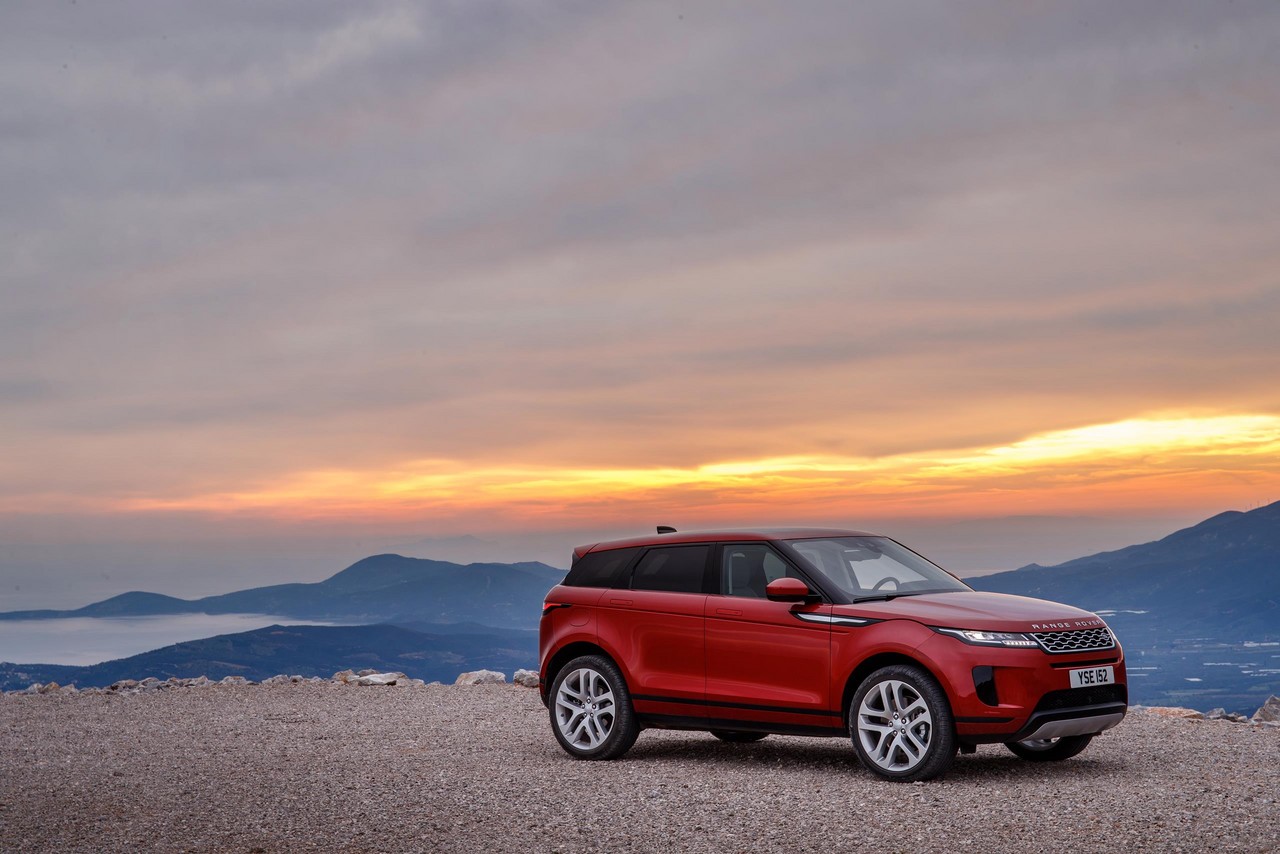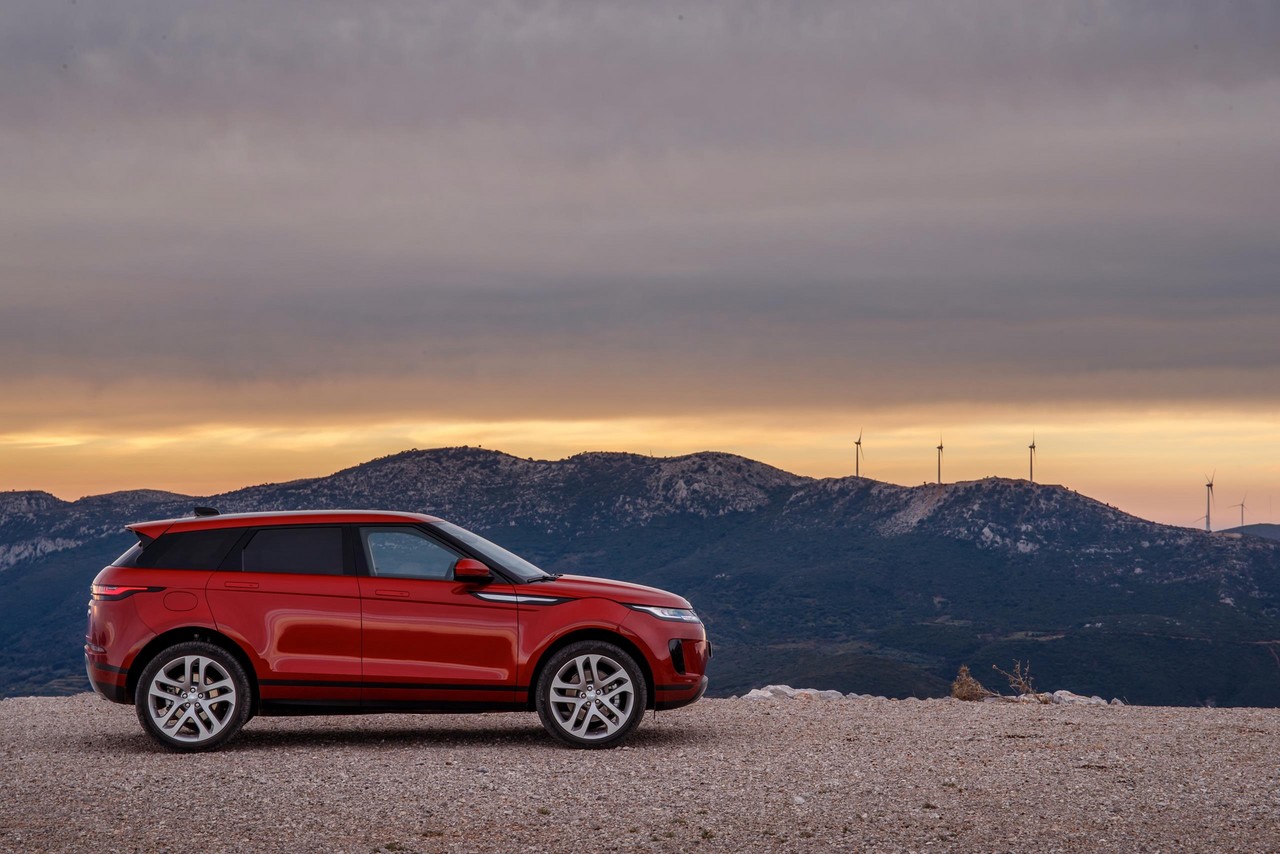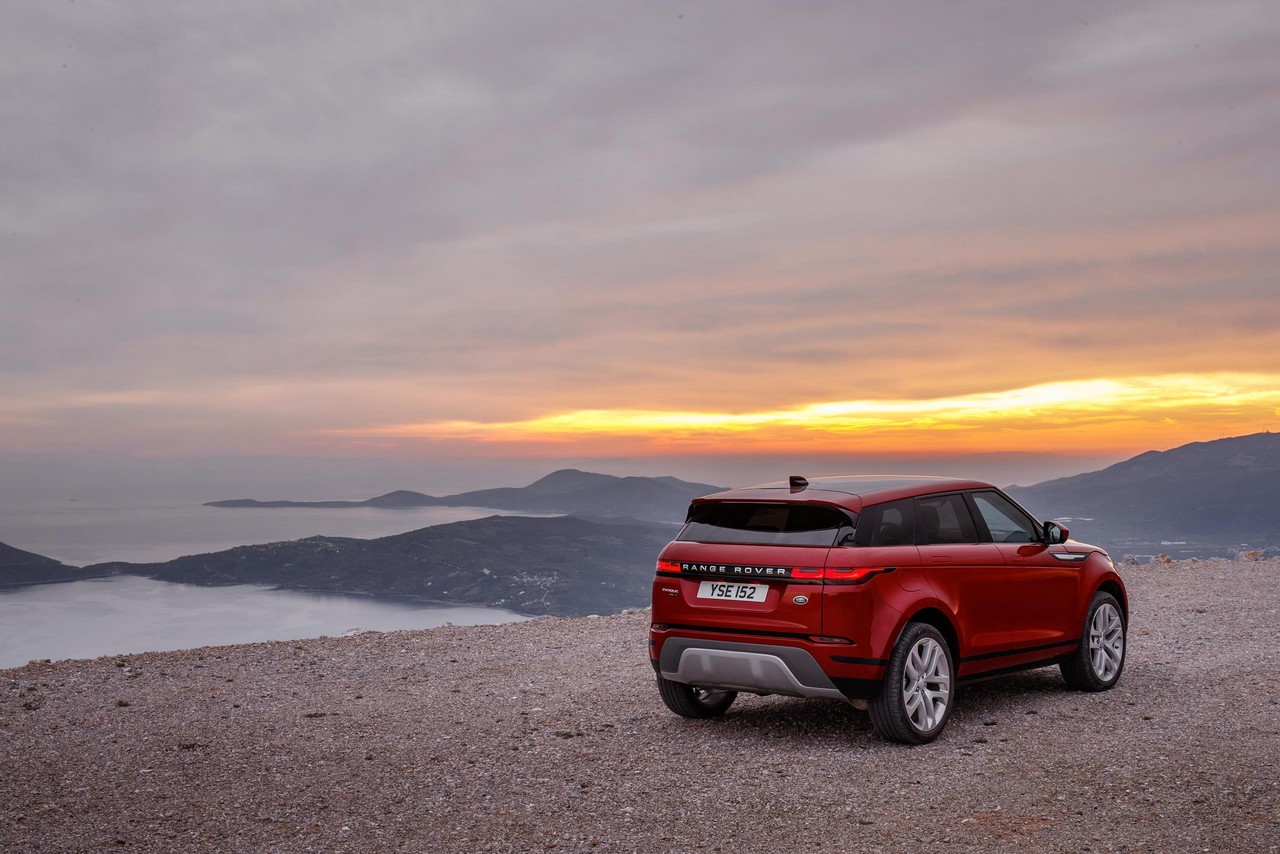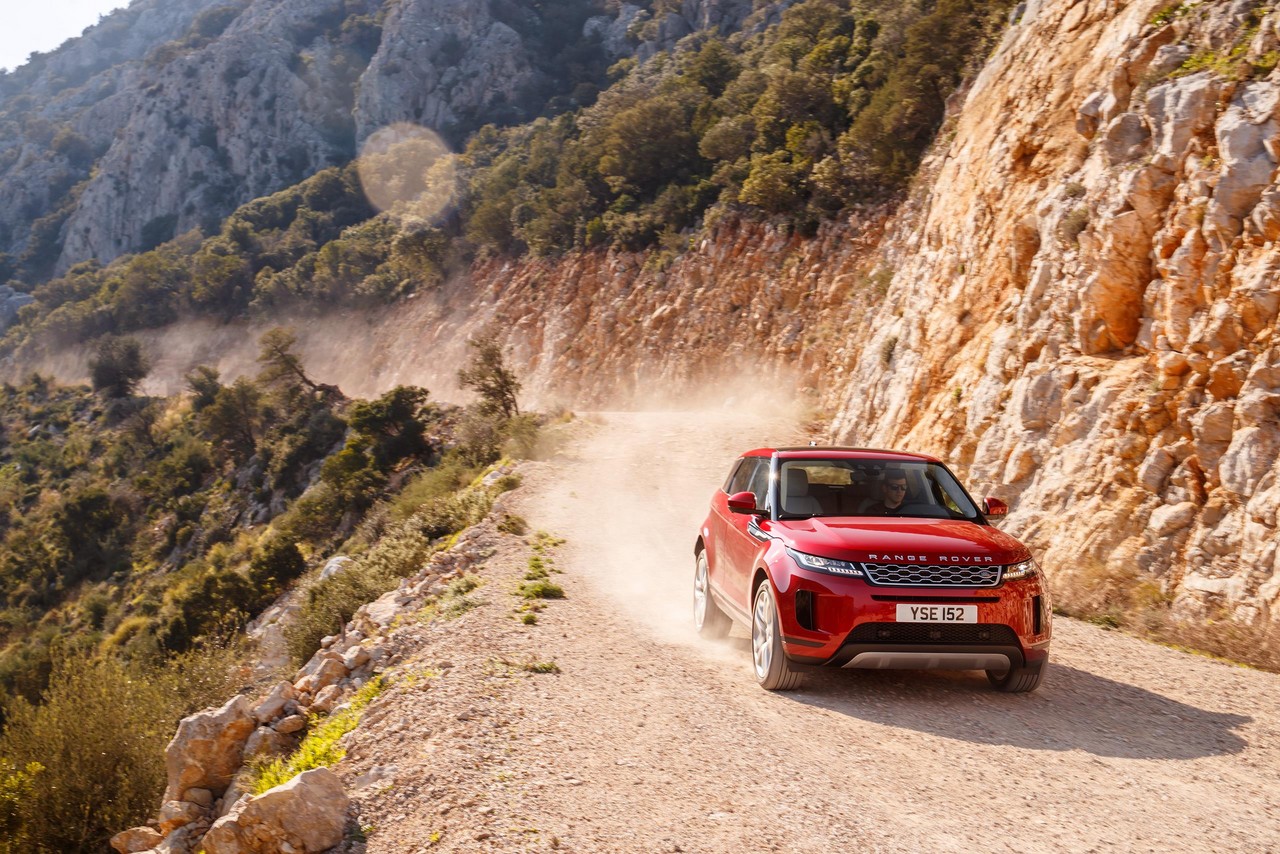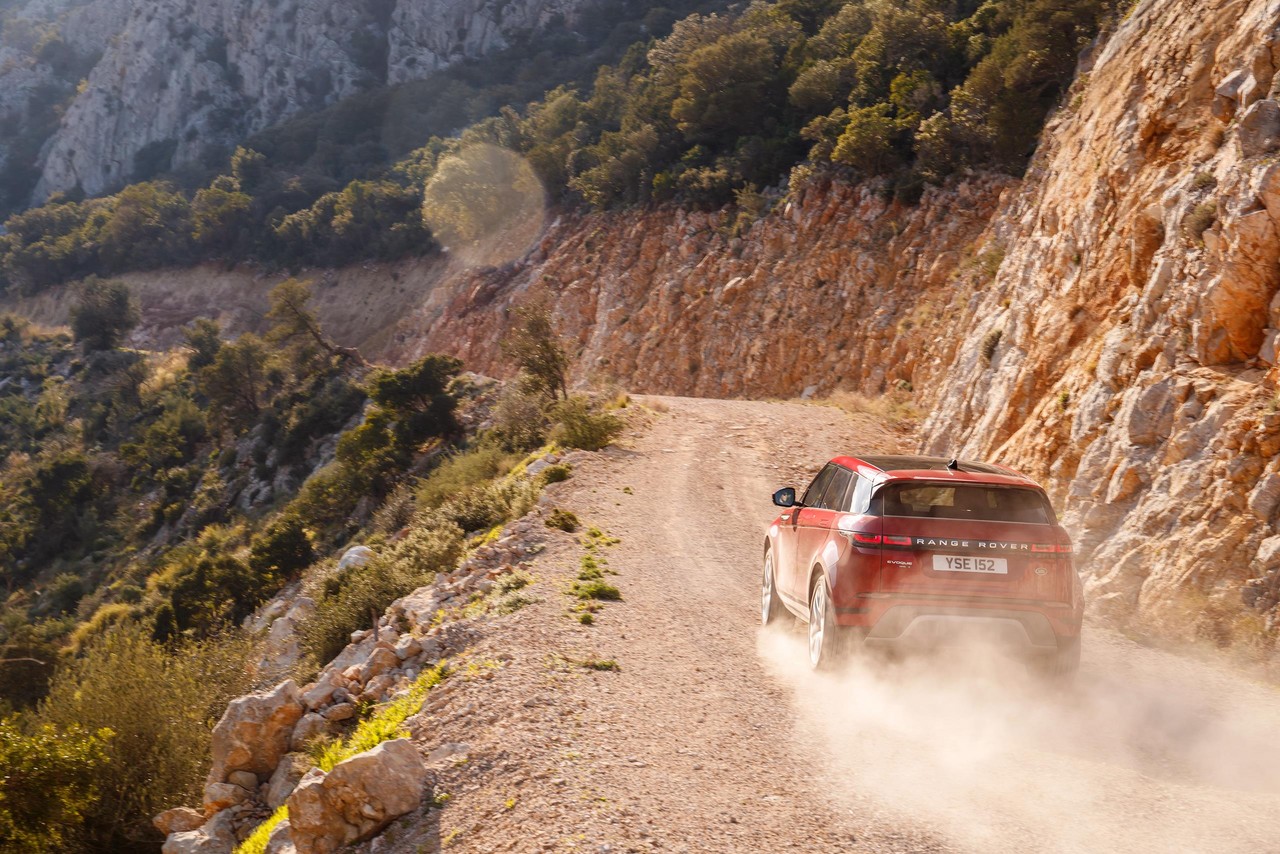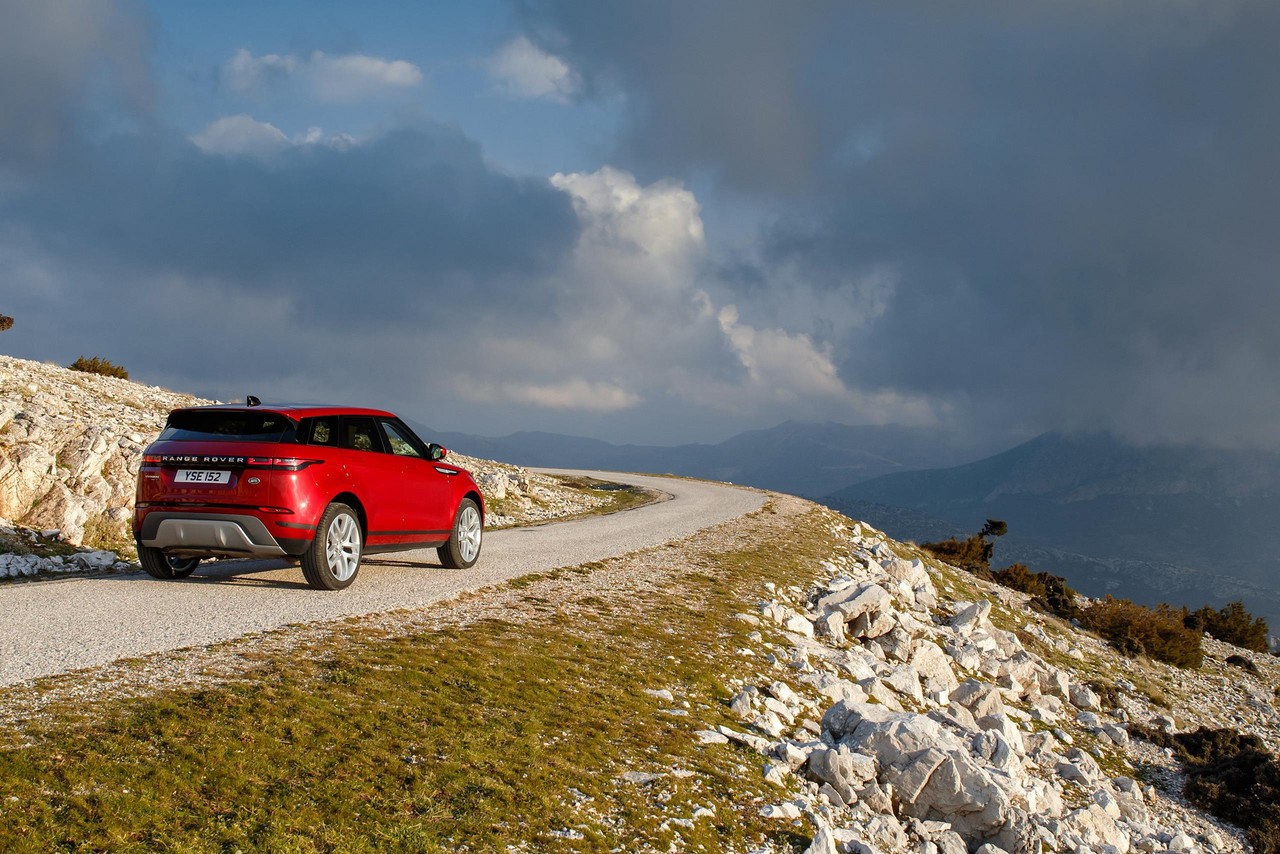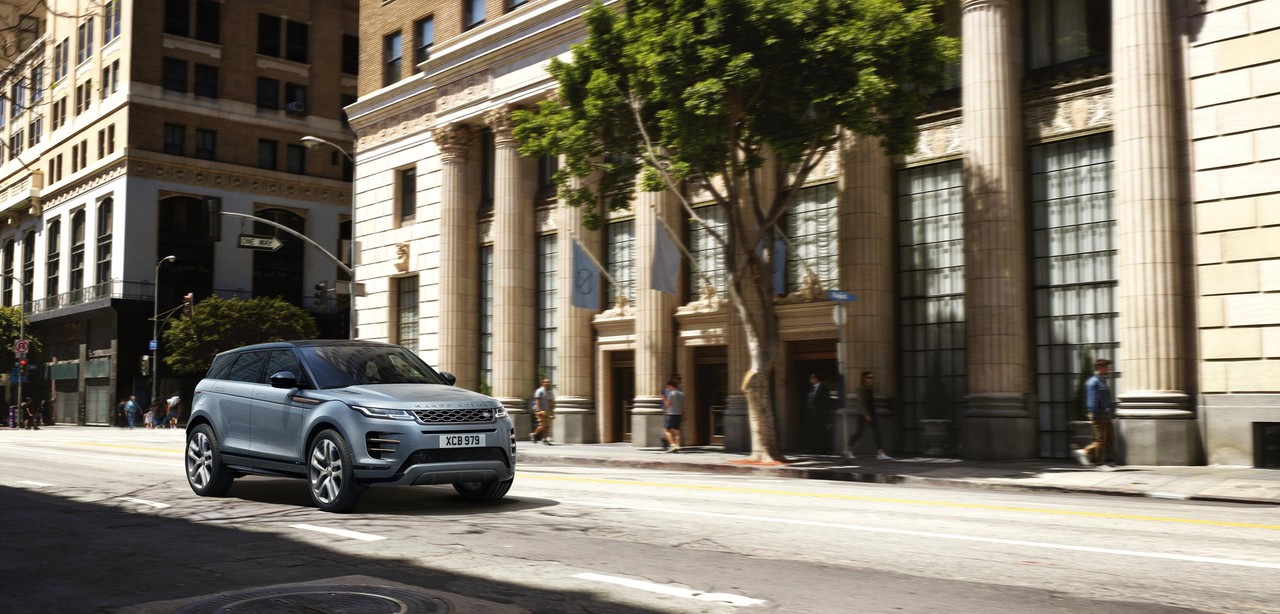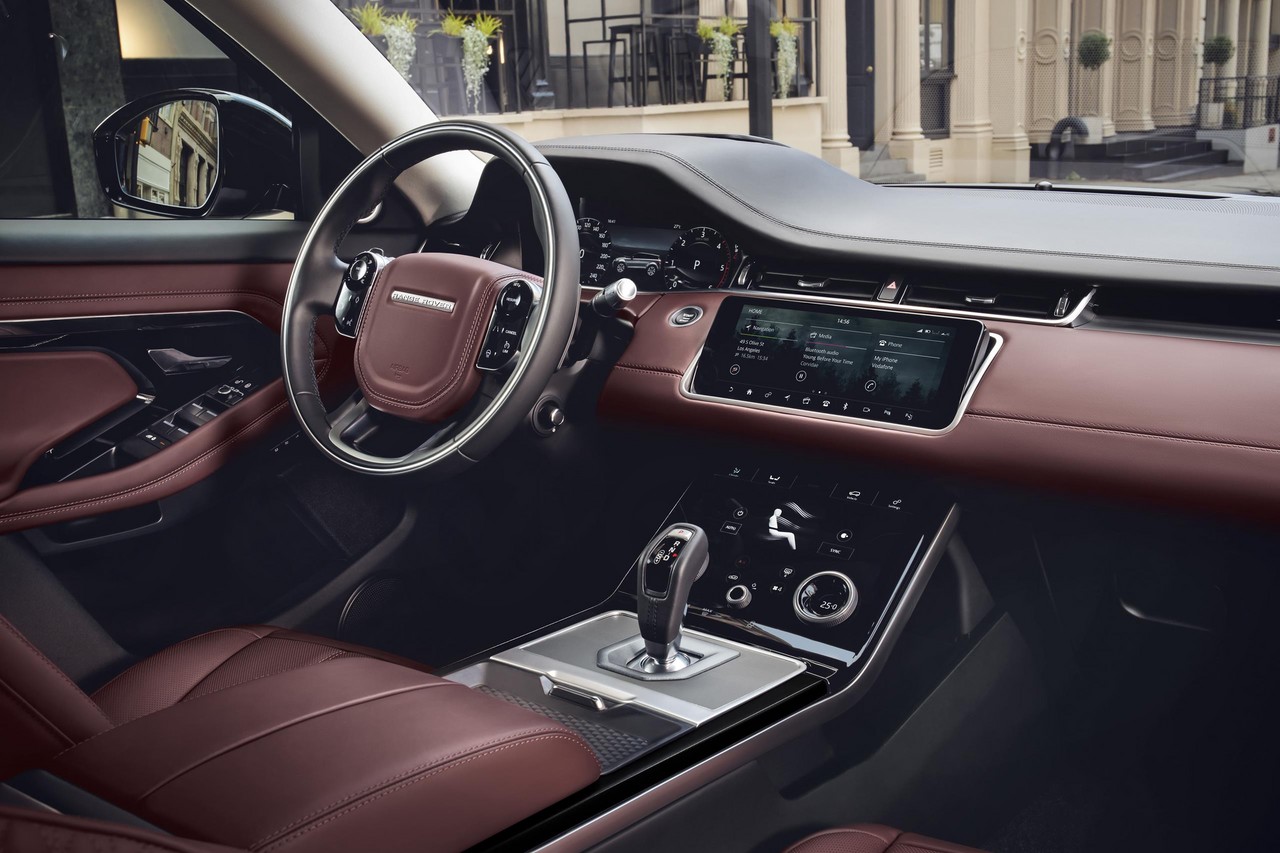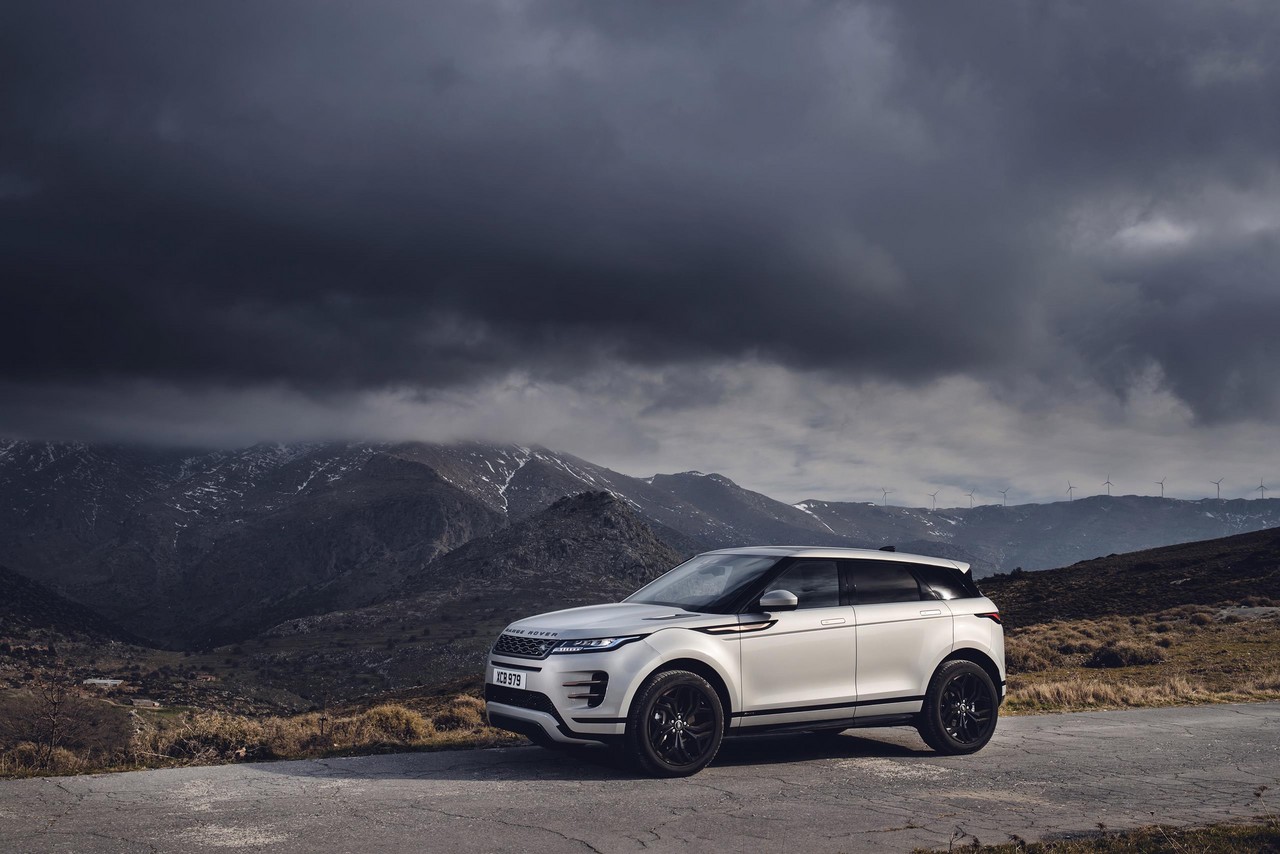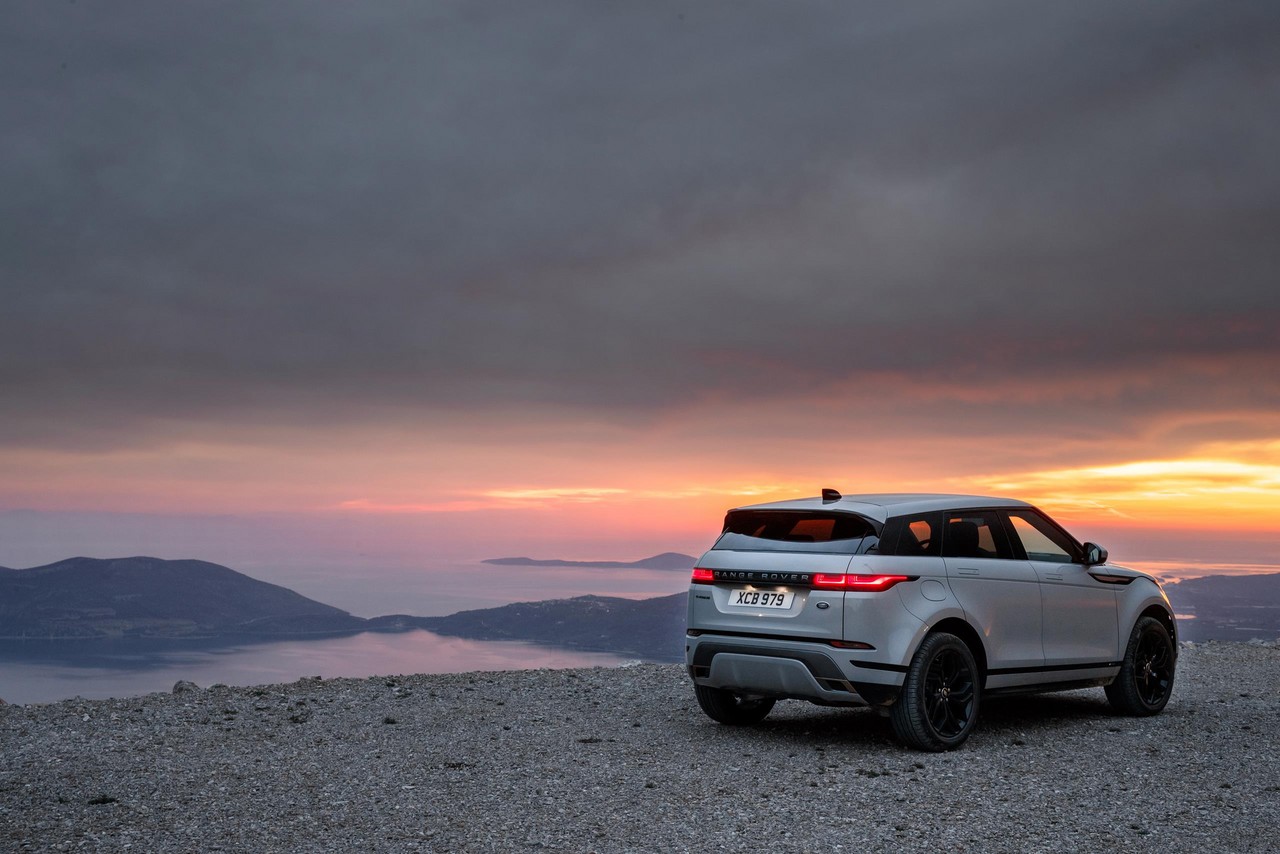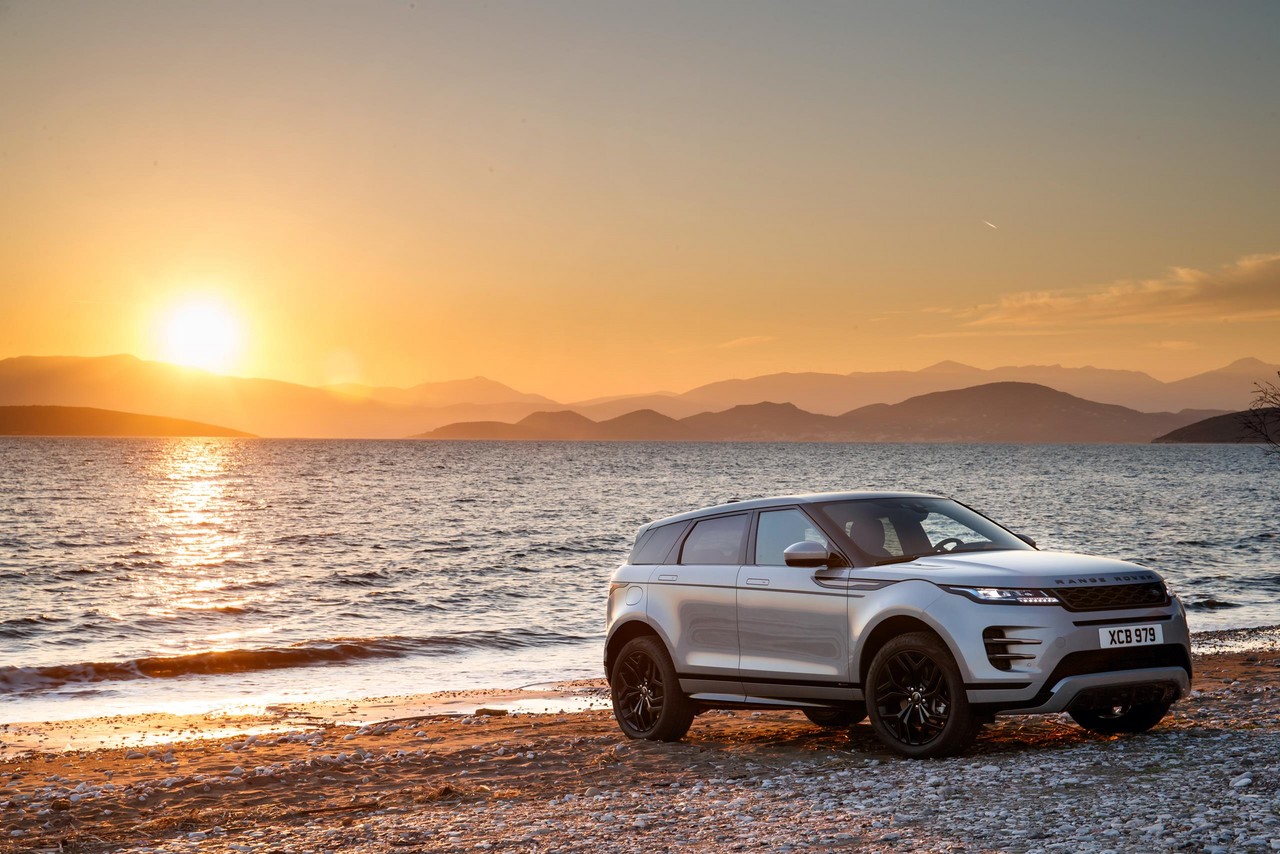
- Significantly more interior space than L538 Evoque , though still not great for second row passengers
- Quiet petrol engines
- Impressive ride quality and body control
- Well-weighted steering
- Off-road ability (not that most owners will use it)
- Mixed metal construction reduces mass…
- … but mild hybrid technology increases total mass by 65 kg relative to L538 Evoque
- Safety equipment staggered between S, SE and HSE editions
- Underwhelming performance from P250 variant
- Variable interior fit and materials
- High retail pricing
- Less luggage space than rivals
Overview
Released in Australia May 2019, the Land Rover L551 Range Rover Evoque was a five-door SUV. Manufactured in Halewood, UK, the L551 Range Rover Evoque range consisted of D150, D180, D240, P200, P250 and P300 variants (see table below), which were powered by Land Rover’s ‘Ingenium’ diesel and petrol engines.
All-wheel drive models in the L551 Range Rover Evoque range had a ‘mild hybrid’ powertrain which used an engine-mounted belt-integrated starter generator to harvest energy normally lost during deceleration; this energy was then stored in a 46.2 volt lithium-ion battery located beneath the rear seats. Furthermore, the engine would shut off at speeds below 17 km/h when the brakes were applied.
From the second quarter of 2020, the L551 Range Rover Evoque will be available with a plug-in hybrid powertrain.
| Variant | Engine | Trans. | Peak power | Peak torque |
|---|---|---|---|---|
| D150 FWD | 1999 cc turbo diesel I4 | 6sp man. | 110 kW at 2400 rpm | 380 Nm at 1750-2500 rpm |
| D150 AWD MHEV | 1999 cc turbo diesel I4 | 9sp auto | 110 kW at 2400 rpm | 380 Nm at 1750-2500 rpm |
| D180 AWD MHEV | 1999 cc turbo diesel I4 | 9sp auto | 132 kW at 2400 rpm | 430 Nm at 1750-2500 rpm |
| D240 AWD MHEV | 1999 cc turbo diesel I4 | 9sp auto | 177 kW at 2400 rpm | 500 Nm at 1500-2500 rpm |
| P200 AWD MHEV | 1998 cc turbo petrol I4 | 9sp auto | 147 kW at 5500 rpm | 340 Nm at 1300-4500 rpm |
| P250 AWD MHEV | 1998 cc turbo petrol I4 | 9sp auto | 183 kW at 5500 rpm | 365 Nm at 1300-4500 rpm |
| P300 AWD MHEV | 1998 cc turbo petrol I4 | 9sp auto | 221 kW at 5500 rpm | 400 Nm at 1500-4500 rpm |
‘Active Driveline’ all-wheel drive system
The L551 Range Rover Evoque had an ‘Active Driveline’ with ‘Disconnect’ function. In normal conditions, the ‘Disconnect’ function fully disengages the rear wheels – to reduce frictional losses and improve fuel economy – such that the Range Rover Evoque was front-wheel drive. However, the rear axle could be re-engaged in less than 400 ms if the system determined that all-wheel drive was needed for additional traction.
The Active Driveline system also had a torque vectoring function that adjusted torque distribution between the rear wheels when cornering to reduce understeer. Furthermore, when oversteer was detected, ‘driveline yaw damping’ was used to stabilise the vehicle.
When off-road, the rear differential could lock to minimise wheel slip on the unloaded rear wheel such that less traction control assistance and throttle input was required to overcome obstacles.
Terrain Response 2
For the L551 Range Rover Evoque, Land Rover’s ‘Terrain Response 2’ system enabled the driver to select the following drive modes:
- Auto (which automatically selects the most appropriate mode for the conditions);
- Comfort;
- Sand;
- Grass-Gravel-Snow; and,
- Mud & Ruts.
These modes adjusted settings for throttle mapping, steering weight, traction control and gear shifting.
All Terrain Progress Control, Hill Descent Control and Gradient Release control
Land Rover’s ‘All Terrain Progress Control’ (ATPC) maintained vehicle speed so that the driver could concentrate on steering the vehicle. ATPC operated in both forward and reverse gears and was operational from 3.6 km/h to 30 km/h. ATPC was activated by a button and the desired speed could be set using the cruise control switches on the steering wheel. Complementing ATPC, Hill Descent Control used the ABS system to maintain a controlled vehicle speed on steep inclines without driver intervention. HDC also incorporated ‘Gradient Release Control’ to progressively release the brakes when moving away on an incline.
Body and dimensions
The L551 Range Rover Evoque was underpinned by Land Rover’s mixed-metal ‘Transverse Architecture’. Compared to the L538 Range Rover Evoque which preceded it, the L551 Range Rover Evoque was the same length (4371 mm), 4 mm wider (1904 mm), 14 mm taller (1649 mm) and had a 21 mm longer wheelbase (2681 mm). Furthermore, the body of the L551 Range Rover Evoque was 13 per cent stiffer than its predecessor.
Beyond this, the L551 Range Rover Evoque had:
- Luggage space of 591 litres which increased to 1383 litres when the 40:20:40 second-row seats were folded;
- Ground clearance of 212 mm;
- A 25 degree front departure angle and 30.6 rear departure angle;
- 600 mm wading capability, while an optional ‘Wade Sensing’ features used ultrasonic sensors in the exterior door mirrors to measure water depth. This information was then displayed on the central touchscreen; and,
- Drag co-efficients which ranged from 0.32 Cd to 0.33 Cd.
Suspension
The L551 Range Rover Evoque had MacPherson strut front suspension with ‘Hydrobush’ technology (i.e. fluid-filled bushes which minimised high-speed wheel vibration that would otherwise be felt through the steering wheel) and ‘Integral Link’ rear suspension.
As an option, the Range Rover Evoque was available with Land Rover’s ‘Adaptive Dynamics’ system which consisted of sensors that monitored road conditions every 10 ms and variable suspension dampers which continuously adjusted damping resistance to improve ride quality.
Steering
The L551 Range Rover Evoque had rack-and-pinion steering with electric power assistance. The steering wheel required 2.31 turns from lock-to-lock, while the Range Rover Evoque had a turning circle of 11.6 metres.
Safety equipment
Standard safety equipment for the Land Rover L551 Range Rover Evoque included dual front airbags, front side airbags, full-length curtain airbags, ABS, electronic brake force distribution, brake assist, electronic stability control, traction control and front seatbelts with pre-tensioners and load limiters.
Fitted as standard, the Range Rover Evoque had a stereo camera – mounted behind the front windscreen – which generated a 3D view of the road up to 100 metres ahead. At speeds up to 80 km/h, the Autonomous Emergency Braking (AEB) system could use this information to detect if a collision was imminent and, if so,
- Pre-charge the braking system;
- Warn the driver via a visual warning in the instrument cluster (and head-up display where fitted); and,
- If the driver failed to respond, initiate emergency braking to avoid or mitigate a collision.
As standard, the Range Rover Evoque was fitted with a Lane Departure Warning (LDW) system which monitored the vehicle’s position relative to lane markings. If the system detected that the driver crossed those lane markings without indicating, the driver would receive a visual warning in the instrument panel and a haptic warning in the form of steering wheel vibrations.
For Australian deliveries, the L551 Range Rover Evoque was fitted – as standard – with the following –
- Lane Keep Assist (LKA): could return the vehicle to the centre of its lane by applying a small amount of counter-steering through the steering system. However, this steering torque could be over-ridden by the driver;
- Driver Condition Monitoring: monitored steering inputs, throttle and brake application, lane departure and the driver’s use of direction indicators for signs of fatigue. If detected, the system would provide multi-stage warnings in the instrument panel recommending that the driver take a break; and,
- Traffic Sign Recognition and Adaptive Speed Limiter: used the stereo camera to read speed limit signs and information from the satellite navigation system to display speed limits in the instrument cluster and, if fitted, the head-up display.
Beyond this, the Range Rover Evoque SE and HSE were further equipped with –
- Reverse Traffic Detection: used a 24 GHz radar to detect approaching vehicles that may cross the driver’s path as they were reversing. If detected, an orange warning symbol would illuminate in the door mirrors to alert the driver; and,
- Clear Exit Monitor: when the vehicle was stationary, Clear Exit Monitor could detect approaching vehicles or cyclists via the rear radar sensors and warn rear seat passengers by illuminating a warning light next to the door handle.
The range-topping Range Rover Evoque HSE was distinguished by its –
- Blind Spot Monitor: used sensors to detect fast-moving vehicles within 70 metres and alerts the driver. As a vehicle approached the blind spot, an icon would flashes in the side mirror as a warning. Once the vehicle entered the blind spot, the icon would remain illuminated; and,
- Blind Spot Assist (BSA): enhances the Blind Spot Monitor system by using the collision warning system in conjunction with the electric power steering system. If the driver was changing lanes and BSA detected that a vehicle was in the driver’s blind spot or approaching the blind spot, gentle steering force would be applied to keep the vehicle in its lane.
As an extra-cost option, the Range Rover Evoque could be specified with Adaptive Cruise Control (ACC) with Steering Assist. ACC used a long-range 77 GHz radar to maintain a set cruising speed and a safe distance from the vehicle ahead with automated braking. Furthermore, the ‘Steering Assist’ function could centre the vehicle in its lane based on road markings.
Euro NCAP testing
In Euro NCAP testing , the Land Rover L551 Range Rover Evoque received a five star safety rating which included a 94 per cent adult occupant protection rating and an 87 per cent child occupant protection rating. In the frontal offset test, occupant protection was generally rated as good, though chest protection for the driver was rated as adequate (i.e. a slight risk of serious injury). Maximum points were awarded in the side impact test but, in the more severe pole test, chest protection was rated as adequate.
Features: Land Rover L551 Range Rover Evoque
The L551 Range Rover Evoque was available in S, SE and HSE editions, while an ‘R-Dynamic’ styling package will also be offered.
Inside, the Range Rover Evoque featured Land Rover’s ‘Touch Pro Duo’ infotainment system which consisted of a high-definition 10-inch touchscreen, a 12.3-inch driver display behind the steering wheel and a full-colour head-up display. The infotainment system included:
- Apple CarPlay and Android Auto smartphone integration;
- A 4G Wi-Fi hotspot (for up to eight devices) for internet connection;
- Six USB ports in the cabin; and,
- ‘Click & Go’ rear-seat tablet holders with charging capability.
With the ‘InControl Remote’ smartphone app, owners could use their phone to find their vehicle, check the remaining fuel range, lock and unlock the vehicle remotely, as well as pre-heat or cool the cabin to the desired temperature.
For a complete list of features, please refer to the ‘Specifications’ document, below.
Specifications
